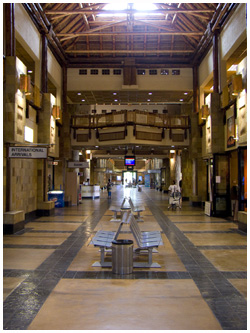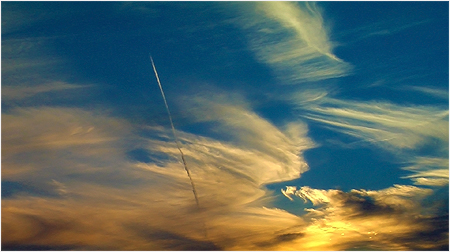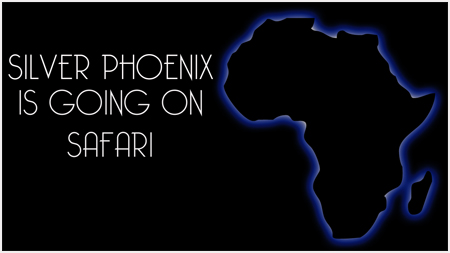
Once we had our destination locked, I started bombarding Craig Berger from Oasis Africa about filming in Kruger. The problem I quickly learned was that you can’t shoot from the roof like you can in so many other parts of Africa. Getting out of the vehicle is also strictly prohibited except in a few very isolated spots.
Normally you lay a beanbag or some other support on top of the roof and you have a 360-degree panorama of the surrounding area.
So, I’m going to Africa, I’m taking a brand new camera from Panasonic to get them some good footage and I have to sit inside a van and shoot out of a sliding window. The alarm bells were already going off.
So, I tried to find out what other crews did when filming in a situation like that. Well, there really isn’t much info out there. The information that I could find was all on setups that were on top of the vehicle or in an open vehicle.
My first thought was to order a Molar beanbag support. This beanbag looks like a big molar, hence its name. I picked one up, filled it with birdseed and headed out to do some test shooting on the river near my house. The camera picked up any movement or vibration. This wasn’t going to work.
Craig had made some buckwheat hull bag supports that fit over the windowsill. He said that they would absorb a lot of vibration. We also brought along a Cinnesaddle which is basically a beanbag with a cradle shape so that the camera is supported on both sides which normally works great in situations where you can lock down the camera.
I wanted to try and get some time-lapse sequences inside the camps so I wanted to bring a tripod along for those as well.
The State Department has you so scared that I was afraid to pack my Miller carbon fiber tripod legs in my checked luggage for fear I’d never see the $800 legs again. So what to do?
There are plenty of small lightweight carbon fiber tripods for still cameras. I could easily get one of these and make it sort of work for video, but I wanted something that was more than a one use deal. If I was going to spend several hundred dollars, I wanted a tripod that was more suited for video.
Video tripods have what’s called a bowl that sits between your tripod legs and the head. This allows you to loosen one knob and level the entire tripod head so that you can pan and tilt while keeping the camera level. Think of it as an upside down ball head for still cameras.
I finally found a carbon fiber tripod that had a bowl for video and was small enough to put in my carry on bag. It was half the cost of my Miller sticks but for $400 I could put this in my carry on bag and not have to worry if it was going to show up in Kruger or not.
So, I packed a Bogen 503 fluid head, my Feisol CT-3342 carbon fiber tripod and I was good to go.
We arrived in Kruger early enough that we can go out on an afternoon game drive.
We just met Craig, piled everything in the van and we’re off to go film already.
Usually I like to get to know an area a bit so I can get a vibe for how I want to shoot. Not here.
We stopped long enough to check into our lodging, unload everything, heat up some Chakalaka and we were out the door.
Craig has some fantastic buckwheat husk bags that are attached to a metal frame work that fit over the windowsill. For still photography they are fantastic. Plus they make a great arm support when you’re travelling down the road looking for wildlife.
The problem with shooting video is that you have to take this 14 pound camera and BALANCE it on the beanbag. If you let go, the camera tumbles to the ground, game over.
So after a couple days of shooting I had to come up with something else. The footage was ok in many instances but it looked handheld instead of supported.
We tried just about everything we could think of but it was Angi who suggested I sit in the middle seat, flip up the seat closest to the door and wedge my tripod inside and shoot out the window.
So, I scrambled in the van, set up the tripod, mounted the camera and pointed it at some impalas that were grazing on the far side of the camp.
Well what do ya know, as long as I didn’t move inside the van, I was able to get fairly steady footage. As long as we didn’t move around too much it worked out great.
I did the same thing once we moved over to the other van but with its stiffer suspension, even breathing would rock the camera.
So why not go back in Craig’s van? In hind sight I probably should have. But I thought if no one moved, we could make this other van work. We wanted to be able to use Craig as a forward scout. Craig had a pair of radios so we could stay in contact with each other. So if I was filming some impala, Craig could go up ahead and say “Hey, there’s some lions up here.†And off we’d go.
It was a great system because I could stay with a subject and not worry that I was missing something just around the bend. Because of Craig’s forward scouting, I was able to get some fantastic shots that I would have missed if we had stayed where we were.
After each drive, we had one in the morning and one in the afternoon, we’d return back to camp and I would recharge the batteries and transfer the footage to hard drives.
With two 32 gig P2 cards, I never had to worry about running out of capacity. Although I shot so much, I was worried I was going to run out of portable hard drive space. ☺
I brought along 320 gig Western Digital hard drives to back up the footage after each drive. They’re small, lightweight and reliable. They easily travelled in my carry-on bag.









Africa: A Moment in Time
Back in January and February, I had a fantastic opportunity to travel to Africa and try out as of then an unannounced camera for Panasonic, the HPX-300.
In previous posts I’ve documented the experience but never really posted any footage.
I have a habit of editing footage together while I’m on a trip so when I get back, I have something to show my friends and family as soon as I get off the plane. Africa was no different.
We arrived home late but still broke out the laptop to show everyone some of the fantastic wildlife we encountered while we were there. My intent was to always go back and re-edit the piece since I had juts taken bits and pieces from each days shoot and put them all together. I still intend to do that, but while you’re waiting for that, I thought I’d show you the footage that I had put together when I stepped off the plane.
A big thanks to Jan from Panasonic for believing in me and letting me take this camera to Africa. Course, I guess a bunch of footage from Iowa wouldn;t have had the same “wow” factor. 🙂
I hope you enjoy the footage. You can view it by clicking here.
If you have a moment please leave a comment and let me know what you thought of it as well as what else you’d like to see posted on this blog.